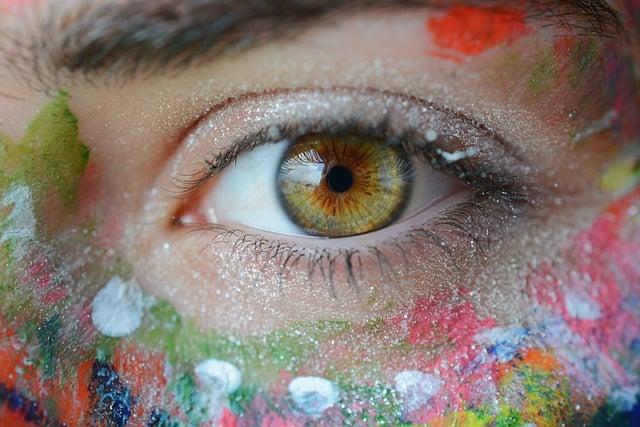In the world of cinema, a delicate dance unfolds behind the scenes—a dance where artistic vision and audience expectations waltz in tandem, each step crucial to the final masterpiece. Filmmakers stand at the crossroads of creativity and commercial viability, wielding the power to shape stories that resonate both personally and universally. This intricate balancing act requires not only an understanding of one’s own creative instincts but also an intuitive grasp of the audience’s desires and cultural zeitgeist. As directors and writers navigate this dynamic landscape, they transform mere ideas into cinematic experiences that captivate, challenge, and connect. Join us as we explore the art of harmonizing vision and expectation, delving into the strategies and insights that guide filmmakers in crafting films that are both personal expressions and public treasures.
Navigating the Artistic Labyrinth: Honoring Personal Vision
In the intricate dance between creativity and marketability, filmmakers often find themselves at a crossroads. The challenge lies in maintaining their unique artistic vision while meeting the diverse expectations of audiences. This balancing act requires a deep understanding of one’s personal creative goals and the ever-evolving landscape of viewer preferences.
- Authenticity: Staying true to one’s creative voice is crucial. Filmmakers who honor their personal vision create works that resonate deeply, even if they diverge from mainstream trends.
- Adaptation: While authenticity is key, the ability to adapt and incorporate elements that appeal to a broader audience can enhance a film’s reach and impact.
- Collaboration: Engaging with writers, producers, and other creatives can provide fresh perspectives, helping to refine the vision without compromising its essence.
- Feedback: Listening to audience feedback can be invaluable. It offers insights into viewer expectations, allowing filmmakers to tweak their approach while staying aligned with their core vision.
Ultimately, the journey through this artistic labyrinth is a personal one, demanding both courage and compromise. By carefully navigating these pathways, filmmakers can craft stories that are not only true to their vision but also resonate with audiences worldwide.
The Audience Compass: Understanding Viewer Desires
In the intricate dance between artistic expression and audience satisfaction, filmmakers employ a metaphorical compass to navigate viewer desires. This involves a deep dive into the psyche of the audience, understanding their evolving tastes and preferences. The challenge lies in aligning a filmmaker’s creative vision with what the audience finds engaging, moving, or entertaining. Filmmakers often analyze trends, feedback, and cultural shifts to anticipate what will resonate, crafting stories that are both unique and relatable.
- Emotional Connection: Striking a balance between personal storytelling and universal themes that resonate.
- Genre Expectations: Innovating within genre conventions while still delivering expected thrills or emotions.
- Feedback Loop: Utilizing audience feedback as a guidepost without compromising the core artistic message.
By harnessing these insights, filmmakers can create a symbiotic relationship with their audience, where both the storyteller and the viewer feel understood and valued.

Bridging Worlds: Techniques for Harmonizing Vision and Expectation
Filmmakers often find themselves at the crossroads of artistic integrity and audience satisfaction. The art of balancing these two aspects lies in a series of thoughtful techniques. Storyboarding serves as a vital tool, allowing directors to map out their vision while considering audience engagement. Through this visual planning, filmmakers can maintain their unique style without losing sight of the viewer’s experience.
Another key technique is test screenings, which provide invaluable insights into audience reactions. These screenings can reveal whether a scene resonates or falls flat, offering filmmakers a chance to refine their work. Additionally, collaboration with writers, producers, and editors can help bridge the gap between vision and expectation. By embracing feedback and being open to adjustments, filmmakers can create a harmonious blend that satisfies both their creative goals and the audience’s desires.
- Storyboarding: Visual planning that aligns vision with viewer engagement.
- Test Screenings: Gauging audience reactions to refine content.
- Collaboration: Working with a team to balance creativity and expectations.

Crafting the Dialogue: Engaging Feedback and Iteration
In the intricate dance between a filmmaker’s creative instincts and the audience’s desires, dialogue becomes a crucial tool. Crafting authentic, compelling conversations on screen requires more than just a writer’s intuition; it demands engaging feedback and iteration. Filmmakers often collaborate with a diverse range of voices to refine their scripts, ensuring that each line resonates with authenticity and purpose.
- Script Read-Throughs: Initial read-throughs with actors and crew provide invaluable insights, highlighting what flows naturally and what feels forced.
- Test Screenings: Inviting a small audience to view the film in its early stages allows creators to gauge reactions and adjust dialogues accordingly.
- Feedback Loops: Continuous feedback from trusted peers helps maintain a balance, ensuring that the artistic vision aligns with audience expectations.
By embracing these iterative processes, filmmakers transform raw scripts into polished dialogues that captivate and connect with audiences, bridging the gap between vision and expectation.

